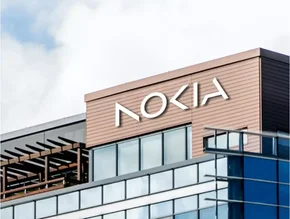Executive lifts lid on 6G research and development outlook

This week Dr Lee Ki-dong, Assistant Vice President at the Research and Standards Lab in LG USA, was reelected as Chairperson of the Next G Alliance’s Applications Working Group.
Founded in 2020 with the goal of advancing 6G technology, the outlook is now that the commercialisation of 6G is expected to begin in 2029. Now, more than 100 companies have joined the alliance to actively accelerate the ‘NGA Lifecycle to 6G’ which spans research, development and manufacturing, standards leadership, market readiness and realisation.
With an LG executive continuing his tenure at the helm of the movement - which LG says reaffirms its leadership in 6G development - Global Head of 5G and Network Services at Tech Mahindra Manish Mangal speaks with Mobile Magazine about the development and roll-out of 6G - both its strengths and elements that could potentially be holding it back.
Please introduce yourself and your role and give a brief career history
I am responsible for overseeing the global 5G and Network Services business at Tech Mahindra. Our primary goal is to assist CSPs and Enterprise customers in unlocking the value of their network assets by simplifying operations, modernising tech stack, and monetizing assets through innovative business models.
I joined Tech Mahindra over four years ago as part of the company’s strategic focus on capitalising on the transformative power of 5G in the telecommunications industry. Leveraging our network services capability has positioned us as a distinctive player in the services sector.
With over 25 years of experience in the Telecom industry, I have held various leadership positions. Prior to joining Tech Mahindra, I spent seven years at Reliance Jio, where I served as the SVP of Network Planning & Engineering and President of Reliance Jio USA. Before that, I led the Technology Development & Architecture organisation at Sprint which was later acquired by T-Mobile. I had a 15-year tenure with Sprint.
Throughout my career, I have had the privilege of leading large organisations and being involved in several industry firsts. These include the launch of the first mobile service in India in 1995 with Bharti Airtel, the establishment of the first digital CDMA mobile network in the US with Sprint PCS, the introduction of the first 4G service in the US with Sprint, the deployment of the first and largest all IP / VoLTE 4G network in India, and the implementation of first cloud-native 4G greenfield networks in Japan with Tech Mahindra.
Despite these achievements, I believe that the most exciting developments are yet to come. The telecom and technology industry is currently at an exhilarating stage, with the advent of AI. The convergence of ultra-fast 5G networks, evolving towards 6G and beyond, along with AI/GenAI, has the potential to revolutionise the interaction between humans and machines. We are nearing a future where network connectivity will become as vital as oxygen, with its presence nearly imperceptible but its absence causing significant disruption.
What is Tech Mahindra and what does it do? What sets it apart from competitors?
We are a US$6.5bn organisation with more than 152,000 professionals across 90 countries helping over 1,290 global customers, including Fortune 500 companies. Tech Mahindra delivers digital transformation initiatives and technology-enabled innovations that have a significant and measurable impact on businesses - whether that’s in cost-savings, operational efficiencies, or the ability to pivot in line with market needs. We are outcomes focused. We evaluate all transformation initiatives and emerging technologies against their ability to deliver on three core commercial priorities on a case-by-case basis for all our customers. These priorities include helping business to run better by delivering cost or operational efficiencies, the ability to change faster by enabling transformation at speed, and the opportunity to grow greater by creating new revenue streams.
Tech Mahindra has already demonstrated the agility, scalability, and efficiency of emerging technologies such as 5G, AI and cloudification. The transformative impact of these technologies has not yet been fully realised, but we are leading the charge for them across the world.
How did you come to work in the mobile/IT industry?
The love for the telecom industry started very early in my life. While I was still in my third year of my Engineering in Electrical Engineering degree, I got exposed to the fundamentals of mobile communications. I thought that was as close to magic as I had ever seen.
Being able to talk on the phone without wires was beyond belief. The curiosity of learning more about this fascinating technology led me to join Bharti Airtel, which was launching the first cellular network in India. That passion got me to the US in 1995 to pursue an MS degree in the Telecom & Networking discipline. 27 years later, I still find this industry as exciting and vibrant as ever.
How do you envision 6G technology playing a crucial role in the evolution of different sectors?
The next-gen tech 6G expected to be 100 times faster than 5G, but its benefits go far beyond speed. It will be a fully integrated system that allows for instantaneous extremely low latency communications between consumers, and sensing of the surrounding environment. 6G-enabled enterprise technologies will transform the way companies process information, communicate, make decisions, and train employees, sparking exciting and innovative use cases and major social shifts.
One thing is very clear, that from 5G onwards the cellular networks are not just B2C or B2B, the orientation is more towards B2B2X. However, as evolve towards 6G, a strong coordination is required in terms of cellular standards and the standards/regulatory framework of the industry that is being targeted with 6G as use case. New use cases will evolve around B2B2X.
6G will also incorporate innovations from adjacent ICT and vertical sectors. These include distributed computing, trusted identity management, distributed ledger technology, and content creation. 6G’s ambitions will also create requirements for the communications industry regarding digital equity, sovereign supply chains, and sustainability.
On the whole, can you provide insight into the progress made in developing 6G core technologies and discovering new applications and use cases?
6G is expected to bring revolutionary change in the societal aspects of doing things. There were multiple views on how the 6G will emerge. However, few days back ITU has formally defined the 6G vision under IMT 2030. The additional key pillars on top of 5G will be integrated sensing and communication, integrated AI and communication and ubiquitous connectivity. While these additional pillars will give an opportunity to explore/create new use cases, the 5G-enabled use cases based on eMBB, UrLLC and mMTC will continue to enhance in 6G too in addition. eMBB will be enhanced to support up to 100s of gbps – enabling immersive communication, uRLLC is expected to evolve to hyper reliable and low latency (up to 0.1msec ) communication, and mMTC will evolve to massive communication with expected connection density up to 10^6 devices/km2.
Overall use cases in 6G are expected to be based on principles of openness and agility, sustainability, security/privacy, resilience, ubiquitous connectivity, and intelligence inherently. Although initial discussions around 6G were based on sub THz frequency, however the consensus is getting generated around the industry that cm Waves (7-24 GHz), will be the best candidates to realise the use cases in the initial phase, as THz comes with its own challenges around propagation and associated ecosystem.
With the commercialisation of 6G expected to begin in 2029, what are the main challenges and opportunities that lie ahead in terms of research, development, manufacturing, and market readiness for 6G?
Technically with every new generation we implement the learnings from their previous generation to overcome the shortcomings and add some new disruptive innovations to leverage the new advancements and breakthroughs in the associated areas like AI, cloud native, quantum, high frequency communication (cm Waves and THz). Same in the case of 6G, we expect that user experience will evolve from 5G for typical use cases along with the focus on cyber physical fusion, AI native design, open interfaces. However, the innovation quotient will be much higher in case of 6G. It’s the right time to learn from the challenges which are being faced in 5G and apply the learnings from the very start as we define the standards for 6G be it NativeAI, open interfaces and industry specific adaptation.
With 6G, there will be need of diverse skill set in the areas of integration open interface/APIs, implementation and use of AI, virtualization and cloudification, expertise of handling higher frequencies like cm, mm waves, security and many more.
Another challenge that may hinder the adoption of 6G technology is the existing technical skills gap in the telecom industry. According to an industry report, up to 33% of network engineering and operations roles lack the necessary skills to address emerging telecom trends, which highlights the need for talent development and upskilling programs. Industries and educational institutions can work together to promote STEM subjects and raise awareness of the exciting career opportunities in tech.
We believe that bridging the skills gap will be crucial for building a robust and sustainable 6G ecosystem that can support the demands of the digital age.
System integration will become more and more important as 6G will be a system of ecosystem encompassing HAPS, NTN, IoT, licensed and unlicensed band operation, multiple vertical industries, blend of digital and physical environment etc. The role of harmonised standards is also very critical. However, region specific requirements should also be pushed to global SDOs to have the global ecosystem.






